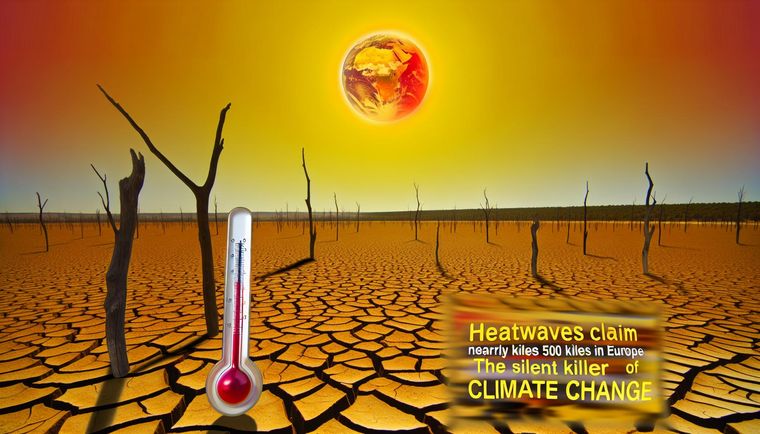Heatwaves Claim Nearly 50,000 Lives in Europe: The Silent Killer of Climate Change

Recent research has revealed that extreme heat exacerbated by carbon pollution led to nearly 50,000 deaths in Europe last year. The continent is experiencing warming at a rate significantly faster than the global average, underscoring the urgent need to address climate impacts on human health. Amid alarming temperatures, wildfires have ravaged forests near Athens, and France has issued excessive heat warnings, while the UK braces for what the Met Office anticipates will be its hottest day of the year.
Doctors have long warned about heat as a 'silent killer,' responsible for a higher mortality rate than many realize; the shocking figures from 2023 reflect this. According to a study published in Nature, the death rate from heat could have surged by 80% if societies hadn’t developed strategies to cope with increasing temperatures over the past 20 years. Elisa Gallo, an environmental epidemiologist at ISGlobal and the lead author of the study, highlighted that while adaptation measures have yielded some success, the number of heat-related fatalities remains unacceptably high.
Europe's temperature rise is now double that of the global average, indicating a pressing need for continued innovation and reform in our approach to climate adaptation. Heatwaves are not only increasing in severity and frequency but also lengthening, a direct consequence of human activities such as fossil fuel combustion and environmental degradation, which have saturated the atmosphere with greenhouse gases. The year 2023 marked a record for global temperatures, with predictions that 2024 will soon follow suit.
Interestingly, researchers found that countries previously considered cooler, such as the UK, Norway, and Switzerland, will experience the largest relative increase in uncomfortably hot days going forward. Conversely, the actual number of heat-related deaths remains highest in southern Europe, where adaptation to heat is more prevalent, but the risks are significantly greater due to scalding temperatures. The mortality rate from heat in 2023 was highest in Greece, with 393 deaths per million residents, followed closely by Italy and Spain.
This grim situation has prompted immediate responses, especially in Greece, where firefighting forces are working tirelessly to combat wildfires that have forced evacuations in Athens and impacted a children’s hospital. The deleterious effects of repeated heatwaves have dried out surrounding vegetation, turning forests into potential fire hazards. The legacy of the 2003 heatwave, which killed 70,000 individuals in Europe, served as a wakeup call to officials who established early warning systems and prevention plans. Yet, the death toll from the record-breaking heat in 2022, which resulted in more than 60,000 deaths, raises questions about the effectiveness of these safety measures over nearly two decades.
The study assessed heat’s impact on health through various eras since 2000, estimating the toll for the previous year at 47,690. Researchers emphasized that mortality rates would drastically increase in historical contexts, noting that heat exposure would be doubly lethal for individuals over the age of 80. Dominic Royé from the Climate Research Foundation, while not involved with the study, stated that consistent monitoring of heat effects on vulnerable populations is essential. He pointed out that while temperature tracking is robust, health impact monitoring needs dramatic improvement.
Although social adaptation strategies have successfully mitigated some mortality risk, they are still deemed inadequate. Experts argue that governments can enhance public safety during heatwaves through urban design that favors cooler cities, establishment of effective early warning systems, and a healthcare infrastructure that can manage increased patient loads in sweltering temperatures.
At an individual level, actions such as remaining indoors, hydrating sufficiently, checking on elderly neighbors, and avoiding the sun during peak hours can significantly lower the risk of heat-related casualties. Dr. Santi Di Pietro, an assistant professor of emergency medicine, noted a concerning uptick in patient volumes due to the heat, akin to levels typically seen during peak flu seasons.
It is clear that tackling heatwaves necessitates a multi-layered approach involving both collective government action and personal responsibility. The fight against climate change must be understood as a public health concern as well, highlighting an imperative for society to adapt to the new realities and consequences of global warming.
Related Sources:
